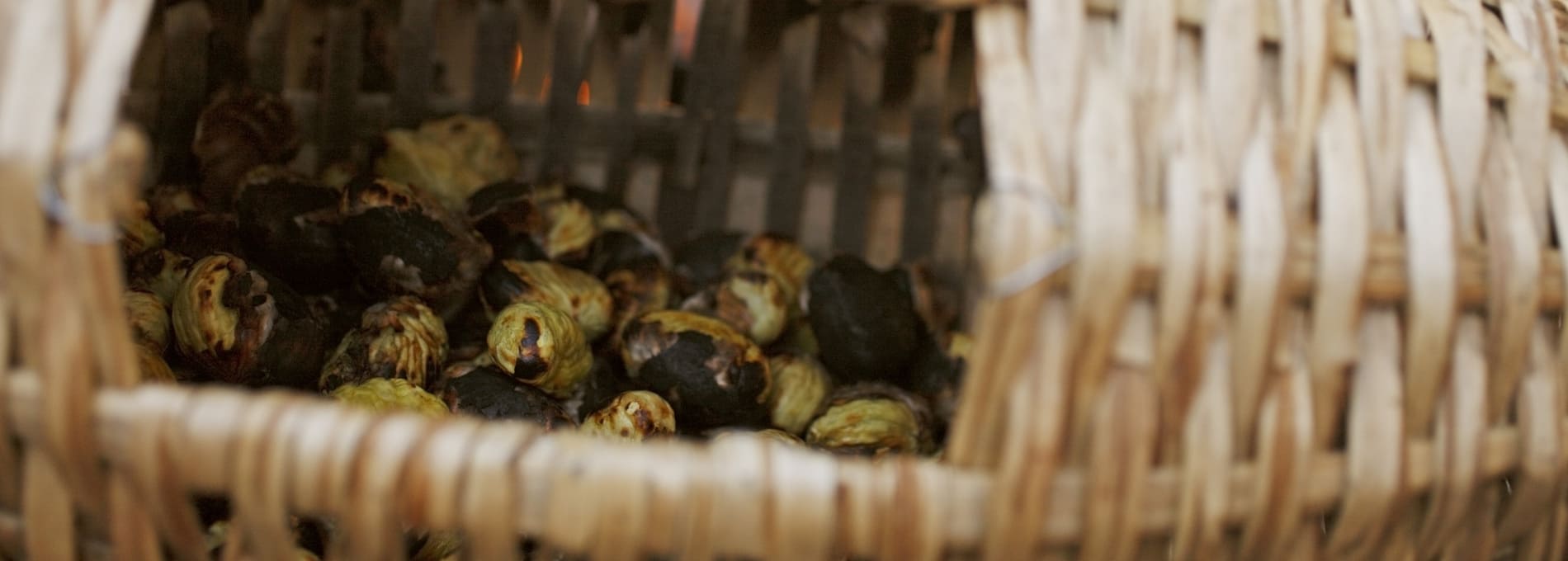How it all began
Do you know what a “Keschtnriggl” is? We would like to tell you. The “Keschtnriggl” is a tool woven from chestnut wood and hazel twigs, which has been used for centuries in the Burgraviate to peel roasted chestnuts. It was the stolid winegrowers around Merano who invented this tool to avoid getting their fingers dirty when peeling chestnuts. Because the Keschtnriggl frees the chestnut from its shell.
After the Keschtn, i.e. the chestnuts were roasted over an open fire, they were put into the Keschtnriggl and shaken vigorously. Thus, the shell comes off and falls through the thin cracks onto the floor, leaving behind the peeled chestnuts.

Keschtnregion Tisens-Prissian, Völlan and Lana
The sweet chestnut is particularly deeply rooted in the southern corner of the Burgraviate, in Lana and on the low mountain range of Ackpfeif, Rateis, Völlan, Naraun, Tisens, Prissian and Grissian above. Already in 1558 the noble fruit was mentioned in the Tyrolean regional rhyme and has always been known for the “beschtn Keschtn”. So it is not surprising that it was in Lana that an important contribution to saving the sweet chestnut was started in 1992 with a much-attended chestnut conference.
You have to celebrate the Keschtn as they fall
Since 1998, every year in late autumn, the Chestnut Days take place, whose name “Keschtnriggl” reflects the exclusivity of the South Tyrolean chestnut culture. Farmers, forestry authorities and numerous local associations, show the numerous visitors a vivid and authentic picture of what the sweet chestnut has meant to this landscape and its inhabitants for many centuries. Highlights of the chestnut days are the chestnut festivals in Völlan and Tisens.
By the way, we still peel our chestnuts by hand. And you?

Copyright Photo: IDM Südtirol-Alto Adige/Frieder Blickle

